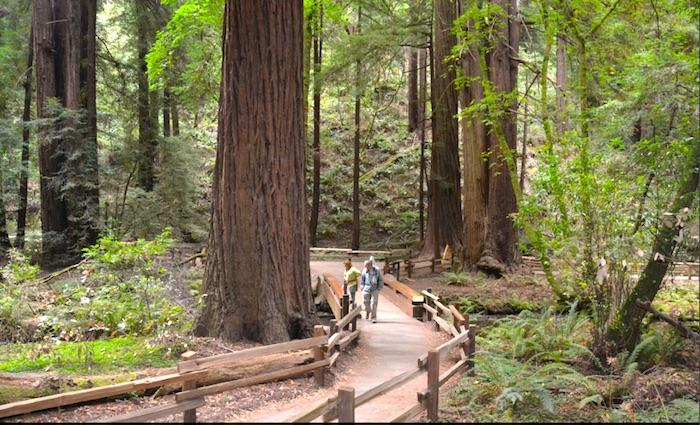
National Park Service officials have settled on a plan that should help visitors to Muir Woods National Monument have an easier time finding a parking spot and entering the monument/NPS
Work won't start for two years, but the National Park Service has completed environmental compliance for a project to improve parking, transit, and visitor access to Muir Woods National Monument just north of San Francisco. The Muir Woods Sustainable Access Project is expected to enhance safety, visitor experience, and protection of park resources through the reorganization of parking areas, optimization of traffic flow, and redesign of the visitor entry plaza.
“A visit to Muir Woods should be about the peace of the redwoods, not a battle for parking,” said Cicely Muldoon, acting deputy superintendent of Golden Gate National Recreation Area. “We are thrilled to be one step closer to providing a safe and inspirational experience for Muir Woods visitors, and protecting these spectacular natural resources. This project is key to achieving our Redwood Creek Watershed vision for the future.”
The monument’s entry plaza and parking areas will be redesigned to create a more intuitive, safe, and enjoyable arrival experience. The entry plaza will be redesigned to provide an improved passenger loading zone while eliminating all vehicular parking with the exception of those with an ADA placard. A former nursery area/maintenance yard will be converted into a small parking area, providing the opportunity to remove all roadside parking from Muir Woods Road (Frank Valley Road), which will improve safety and protect riparian habitat.
At the same time, the Park Service is in the process of implementing a reservation system to manage motorized vehicle access to the monument and plans to begin operating the system in January 2018.
The project also includes: actions to capture stormwater runoff from parking areas before it enters Redwood Creek; a new woodland pedestrian trail experience to facilitate safe passage from parking areas to the old-growth redwood forest; and a new Dipsea Trail footbridge over Redwood Creek.
A Final Environmental Assessment, Finding of No Significant Impact, and Determination of No Impairment have been completed and are available on the NPS Planning website. The Final EA addresses substantive comments received on the Draft EA, which was published in November 2016, and meets compliance requirements under the National Environmental Policy Act (NEPA) and Section 106 of the National Historic Preservation Act (NHPA).
Funding for this project will originate from Recreational User Fees collected at Muir Woods and Federal Lands Transportation Program funds. NPS anticipates construction to begin in 2019 with projected completion in 2020.
The Sustainable Access Project is an important part of a series of projects in the Redwood Creek watershed to ensure enhanced protection of park resources and a safe and enjoyable visitor experience. Concurrent projects include the Muir Woods National Monument Reservation System, which will manage motorized vehicle access to reduce peak visitation levels beginning winter 2018, and the Salmon Habitat Enhancement & Bridge Replacement Project, which will restore habitat in Redwood Creek for aquatic life, including the endangered Coho salmon.



Add comment